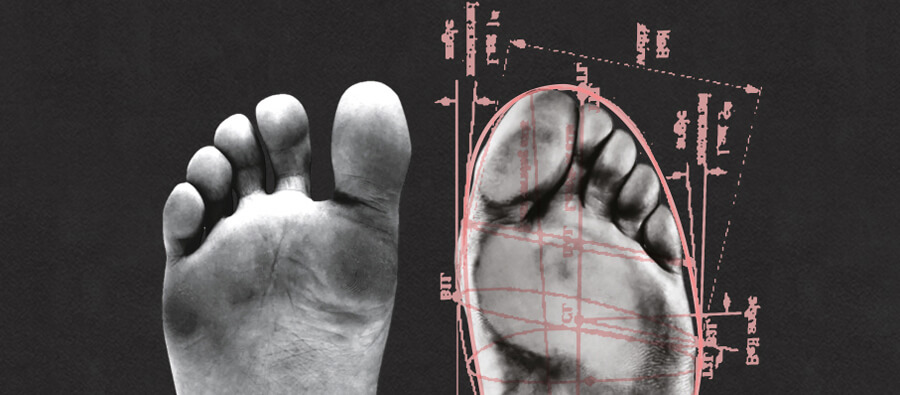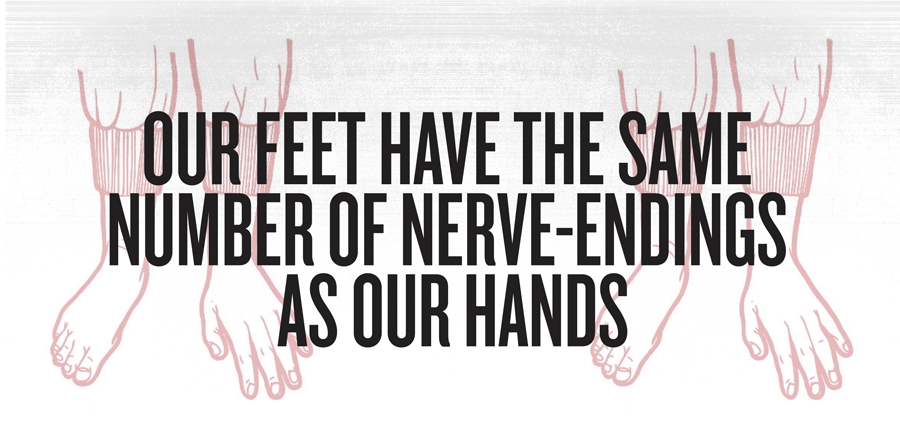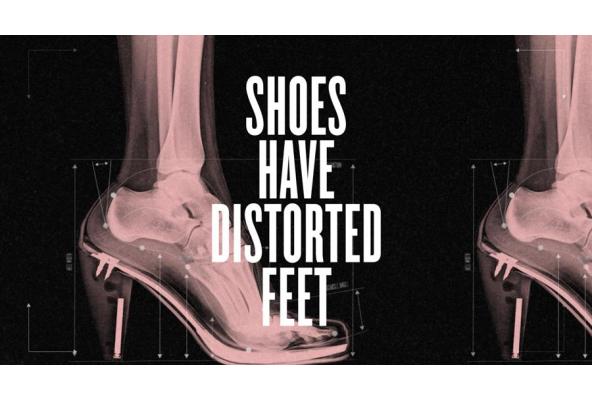Most shoes look nothing like the feet they cover. Which is odd. Because if we take away the shoes, our feet are functionally still the same, and this hasn’t changed for the last few millennia. What has changed, however, is what we wrap our feet in.
If we go right back to the beginning, early homo sapiens - and the Neanderthals - were already tanning and working leather to cover their feet[i]. Fast-forward somewhat and it´s when fashion overtakes function that the shape of shoes starts to seriously deviate from foot-shape. So much so that in the last few centuries, trends in shoe design have even distorted our idea of what the foot itself should look like. Bonkers shoe shapes have become fashionable, even normalized, and this may be to the detriment of our feet and, ultimately, healthy human movement.
The traditional shoe shape as we recognise it today was originally designed as a boot with pointed toe box to allow feet to slide easily into horse stirrups, with a heel block to stop them sliding too far. Back in the day, the shape and quality of a gentleman’s boots were a pretty good indicator that his equestrian skills were up to scratch and that he had a decent ride hitched up outside.
For women, having delicate, dainty feet meant social status and so their footwear followed suit; the material, height and shape of the shoe dictated how a woman could move, as well as how much of her body she revealed.
These days not many of us do the commute on a horseback, and women actually need to get around, so it seems more than little odd that these designs are still the basis for the vast majority of the 23 billion pairs of shoes made each year[ii]: a heel of some form, as well as a pointed or rounded toe.
Fashion has dictated our feet to the point where so many feet are now shaped like shoes instead of feet. Women - more likely to wear narrower, pointier shoes - are four times more likely to have painful, debilitating foot problems than men, highlighting the painful reality of the shoe-shaped environment we force our feet into. But it's not just women's sky-high heels that are at fault - any kind of heel throws our body out of whack. And this affects growing children even more than adults: the 2cm heel (like on some of the world's best-selling sneakers) is the equivalent of a 5cm heel on an adult[iii]. And you´d hardly put your kid in high heels, would you?
Our feet adapt to the environment they’re repeatedly being stuffed into; fashion has overtaken function, normal is no longer natural. Result? Our feet, bodies and the way we move suffers.


Kids who grow up barefoot have stronger, wider feet and present with fewer cases of flat feet than kids who regularly wear shoes[iv][v]. Barefoot kids have also been shown to score better on balance and motor skills than their shod counterparts[vi].
Shoe-shaped designs still even influence the design of sports shoes – trainers, sneakers, kicks or whatever you chose to call them! – since they became fashionable from the 1970’s, and our feet have continued to be bent out of shape.
We’re not the first to challenge shoe-shaped thinking - In the 1700’s a Dutch naturalist, anthropologist and anatomist described the fashion shoes of his day as ‘instruments of torture’, while in the 1850’s James Clark of Clarks shoes designed his ‘hygienic boots and shoes’ on ‘anatomical principles’ to make ‘walking a pleasure.’ In 1905, a doctor called Phil Hoffman published a study into the feet of indigenous people who never wore shoes and concluded in footwear, fashion ‘has a greater influence than reason’[vii].
It wasn´t until the early 2000’s that the shape of shoes started to kick into public consciousness again. One of the biggest shoe companies in the world heard about Stanford athletes training barefoot on the university golf course, and they started experimenting with barefoot characteristics for a stripped-back, more minimalist shoe. Designed to allow your feet to move naturally, it went on to become Nikes most lucrative shoe line to date; the cushioned but very flexible Nike Free.
Meanwhile in the UK a young design student, and often-injured tennis player, kept rolling his ankles over the edge of his squishy conventional sports shoes. He took to his soles with a bread knife, cutting them off and replacing them with the thin layer from his tennis racket cover. With his cobbling shoe friend, Galahad Clark (and founder of Vivobarefoot), they went one step further, realising that the perfect shoe wasn’t just about being foot shaped, but that it also needed a thin sole.



